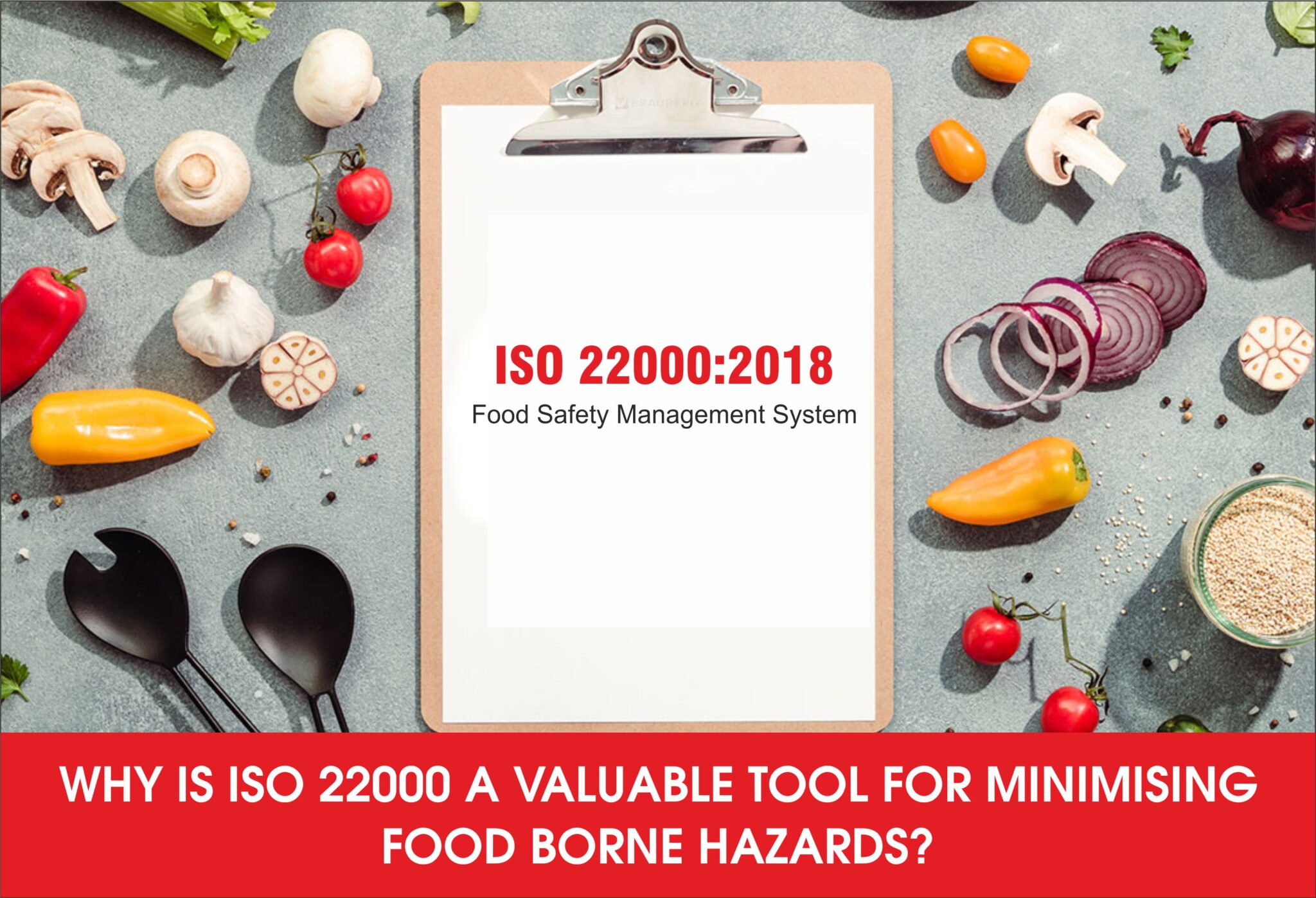Unsafe or contaminated food can severely affect public health, due to which food producers, consumers, and regulatory agencies have serious concerns about food safety. Moreover, it causes businesses to suffer financial and reputational losses. ISO 22000 is a globally recognised standard for managing food safety management systems.
What are foodborne diseases and hazards?
Foodborne diseases are illnesses caused by consuming contaminated food. Moreover, these can be due to biological, chemical, or physical agents that can contaminate food and lead to hazards. These hazards can occur at any stage of food production, from farm to table. However, food safety standards provide proper food handling, preparation, and sanitation to prevent foodborne diseases and reduce the risks associated with these hazards.
ISO 22000:2018 Certification
ISO 22000:2018 Certification is a comprehensive international standard that outlines the requirements for a Food Safety Management System (FSMS). This standard applies to all organizations in the food supply chain, from primary producers to retailers and food service providers. ISO 22000 focuses on preventing and managing food safety hazards by ensuring the safety of the final food product.
The standard also follows Hazard Analysis and Critical Control Points (HACCP) and incorporates a risk-based approach to ensure food safety. It provides a framework for organizations to identify, evaluate, and control food safety hazards by ensuring the safety of food products from farm to fork.
ISO 22000: A Valuable Tool for Minimising Foodborne Hazards ⮯
The International Organisation for Standardisation (ISO) has developed the ISO 22000 standard to identify risks and hazards related to food safety. Moreover, it also acts a valuable to minimise foodborne hazards and threats in the following ways :-
- ISO 22000 follows a systematic approach to food safety to establish, implement, and maintain an effective food safety management system. This systematic approach ensures food safety measures throughout the entire food supply chain.
- ISO 22000 mandates an organisation to identify and evaluate all potential food safety hazards within business operations. Moreover, this includes biological, chemical, and physical hazards. It requires organisations to conduct a thorough hazard analysis and implement preventive measures to minimise the risks associated with these hazards.
- The standard emphasises the importance of prerequisite programs, such as sanitation, personal hygiene, and pest control, for maintaining a hygienic environment. These programs form the foundation for a robust food safety management system.
- ISO 22000 incorporates HACCP principles, a systematic and preventive approach to identifying food safety hazards. HACCP involves identifying critical control points in the food production process by establishing controls to prevent or eliminate risks and threats.
- Effective communication is a significant element of ISO 22000. The standard encourages communication within the organisation and along the food supply chain. Moreover, it ensures that all stakeholders are aware of food safety risks and control measures, helping to prevent foodborne hazards.
- ISO 22000 promotes a culture of continuous improvement in food safety management. Organisations must regularly review and update their food safety management systems to address emerging hazards and changing conditions.
- ISO 22000 helps organizations meet legal requirements related to food safety. Businesses can reduce the risk of legal issues, regulatory fines, and product recalls by adhering to this standard and protecting their reputation.
- ISO 22000 is an internationally recognised and accepted food safety standard. Achieving an ISO 22000 certificate can enhance an organisation’s reputation and open doors to global markets. Many customers and partners prefer to work with ISO 22000-certified food suppliers, as it assures safe food products.
- ISO 22000 certification instils confidence in customers. When consumers see the ISO 22000 logo on a food product, it builds trust in the high quality of the products.
- ISO 22000 encourages collaboration within the food supply chain. When all stakeholders, from food producers to distributors, adhere to the same food safety standard, it creates a cohesive approach to minimizing foodborne hazards.
- The standard requires organizations to establish procedures for emergency response, including potential food safety incidents. Moreover, it can minimise the impact of foodborne hazards when they occur and reduce their impact within the supply chain.
- ISO 22000 aims to protect the health and well-being of consumers. Organizations contribute to reducing the incidence of foodborne illnesses and related health risks by systematically managing food safety.
- The primary focus of ISO 22000 is food safety, but it also has economic benefits. The standard Minimises the risk of foodborne hazards and reduces the financial repercussions, legal actions, and damage to an organisation’s reputation in the long term.
Conclusion ✅
ISO 22000 is a valuable tool for minimising foodborne hazards due to its systematic and preventive approach to food safety. It emphasises hazard analysis, HACCP principles, and continuous improvement to identify, assess, and control food safety risks. ISO 22000 is a global benchmark for food safety management systems, and its adoption can contribute to the overall sustainability and success of organizations in the food industry.



